
Dying at Grace, a documentary set in a terminal care hospital ward that documents the final days, and dying breaths, of several cancer patients, was never going to be an easy film to write about. But given the circumstances of this past week, in both the national news and in my personal life, that burden has become all the more difficult. Of course, the story on so many people’s minds at this time is the horrific massacre that took place in Newtown, Connecticut, a terrible incident that resulted in the death of twenty children – such a profoundly awful contrast to the stark witness of seeing Dying at Grace‘s mostly elderly cast pass away before our eyes. The senselessness of their loss, and all the promise that their young lives held, has generated incomprehensible pain borne by their families, the local community and our nation -along with the the hearts of many people around the world who simply empathize with the pain and sadness experienced by those closest to the tragedy. Nothing going on in my life remotely compares to that living nightmare. But I’ve had to deal with my own setbacks, as minor as they are in comparison.
First, just yesterday, a murder-suicide took place in the parking lot of a social service agency where several of my friends are employed, doing work similar to my own. I’m relieved to know that no one I know was hurt, but it’s still very unsettling to think about what my colleagues are dealing with.
Second, the Eclipse Viewer podcast episode we tried to record about this film and its companion piece, Memory for Max, Claire, Ida and Company, was lost due to some technical glitch that we only discovered about an hour or so into the discussion. By that point, it was too late to start the thing over again, plus we all had other tasks to attend to… so Robert, Josh Brunsting and I will give it another try this coming weekend. As anyone who’s ever lost a recording or a lengthy piece of writing knows all too well, it’s tough to recapture the spontaneity of that first pass, but we’ll do our best to keep it fresh and lively.
Third, this is just a difficult film to live with for the extra week, if you’ll forgive the morbid pun. I was kind of eager to do the podcast and move on to more pleasant diversions. But instead, Dying at Grace will remain on my mind a bit longer, delaying my plans to focus on the next film I’ll write about: Herk Harvey’s Carnival of Souls…

Dying at Grace is the fourth of five films included in Eclipse Series 24: The Actuality Dramas of Allan King. It’s the last of the films that I’ll review in this column (you can find my articles on Warrendale, A Married Couple and Come On Children by following those links.) And given its subject matter, it makes sense that I saved this one for the end, even though it was filmed a couple years prior to Memory, King’s study of the effects of Alzheimer’s Disease on a community of senior citizens living in a residential care facility.
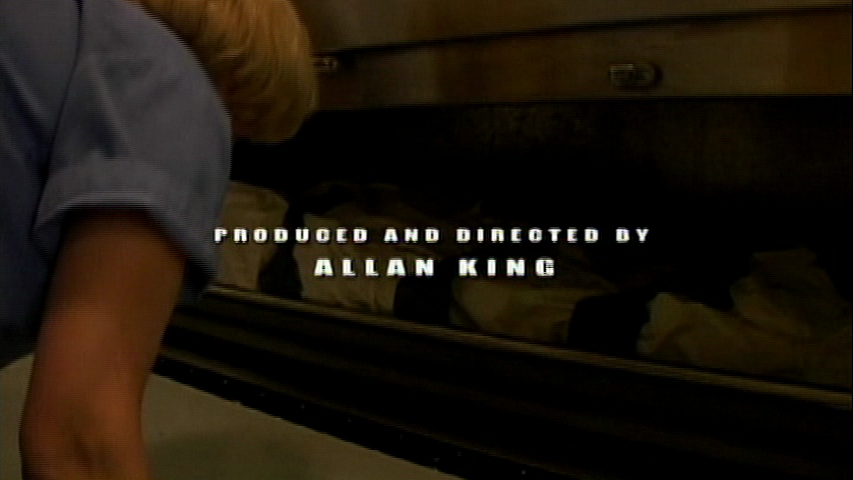
Even though King went on to direct one more film, EMPz 4 Life, a full-circle return to his early-career focus on troubled young people, these two features provide a fitting conclusion to both the box set and King’s career. He himself admits that the subject matter of Dying at Grace was prompted by the occasion of his 70th birthday, when he realized that the idea of death that he’d been blocking from his consciousness over those previous seven decades would become an unavoidable reality relatively soon. So he used his filmmaking prowess to gain a better understanding of what he’d be dealing with. And though it’s a grinding watch over much of its 2 1/2 hour running time, I think we’re all better off having access to a film like Dying at Grace, wherever we happen to find ourselves at this moment on our life cycle. From its grim opening credit sequence, where we see the nursing staff attend to their solemn chore of having to remove a corpse from its bed so that another doomed patient may eventually occupy that space, to the final shot of a face staring into the void, having just given up its final gasp of life, everything we see in this film is applicable in our own preparations, as inadequate as they may eventually prove to be, to take that inevitable walk through the valley of the shadow of death.
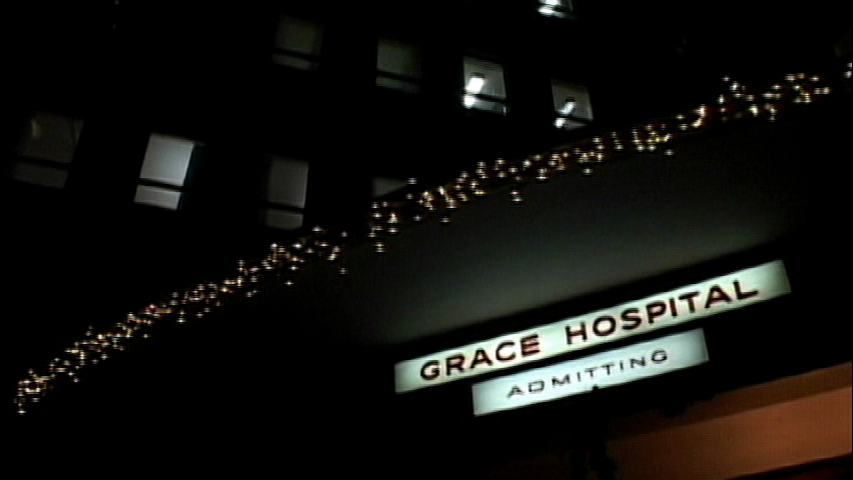
Since I don’t want to repeat myself too much when the time comes to discuss this film in the next few days, I’m bypassing the usual “movie review” – which makes sense to me at least, and I figure to most people who’ve seen it. There isn’t a whole lot of the usual stuff to analyze and react to in Dying at Grace. No emotive musical soundtrack, no acting or theatrical bursts of creativity, of course. Even the image quality is surprisingly mediocre, for a film shot a mere ten years ago, on handheld SD video cameras. The interlaced transfer on this DVD may even be a distraction to some viewers. The most artistically innovative thing about the film is just how directly it views the actual process of dying, a subject usually veiled by taboos, a sense of discretion and not wanting to intrude on a passage that many regard as too sacred and intimate for cameras to have any rightful place. It’s to Allan King’s credit that he was able to enlist the five individuals and their families in this project, and I can only figure that it was the strength of his reputation, not as a film director so much as simply being a man of great sensitivity and respect in documenting people at their most vulnerable. He had to create an incredible sense of trust among the patients and the medical staff to make this project successful, and by all measures, he did just that.
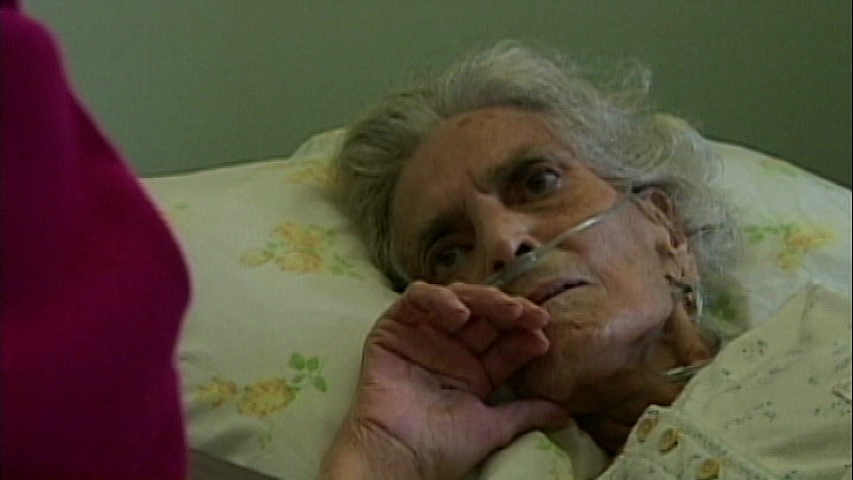
So here’s a brief introduction to the five characters that we come to know a bit at the end of their life’s journey. Carmela Nardone is practically catatonic, already very near to death as the film opens up, so most of what we learn about her comes from listening in on the conversations of the nurses (who give a detailed description of her cancerous symptoms) and her daughter’s exchange with the hospital chaplain, Phyllis Bobbitt. Carmela was a traditional Italian housewife, dedicated to her family. A good woman.
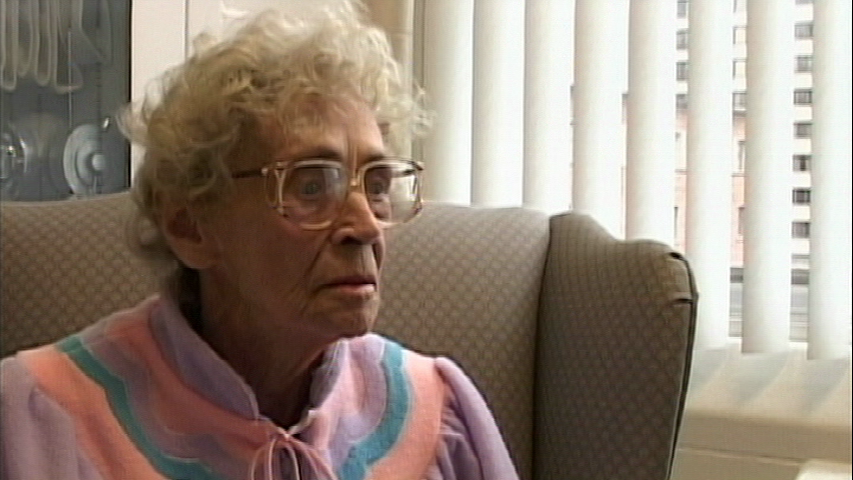
Joyce Bone, Carmela’s roommate, outlives her, but only briefly. Still, she’s sound enough of mind to engage in substantial discourse with the chaplain as she recounts some of the losses in her life. The death of two children, one an infant daughter, the other a young adult son killed by a drunk driver, along with her father’s suicide, have led her to conclude that there is no afterlife, even though she wishes it were otherwise.
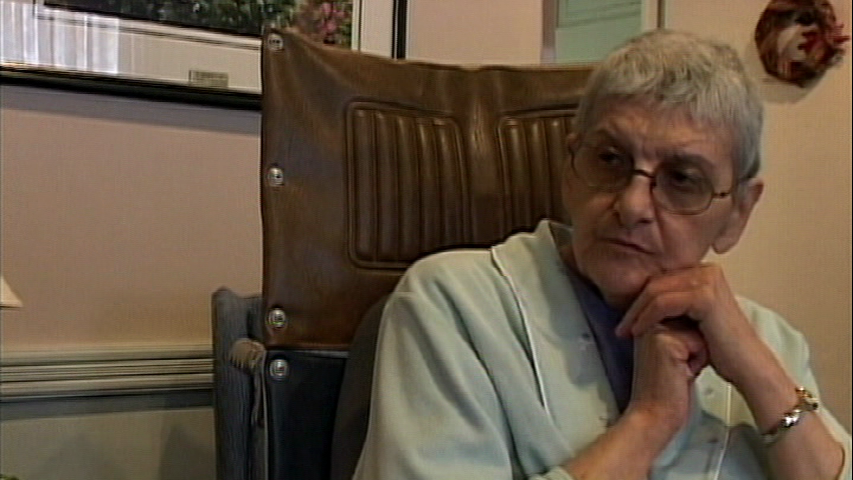
After Carmela dies, her place is taken by Eda Simac, a woman who comes in considerably more full of life and hope than the previous patients we met. She still holds on to the possibility that she will recover from her disease and get back to the routine activities that she still enjoys. She’s the only patient that we see actually leave the hospital, so her aspirations are not necessarily delusional. But she is grounded enough in reality to know that she has to prepare for a more discouraging outcome. But even the real prospect of her imminent mortality does not prevent her from engaging in some manipulative, even vindictive mind games aimed at kinfolk with whom she has strained relationships going back several decades.
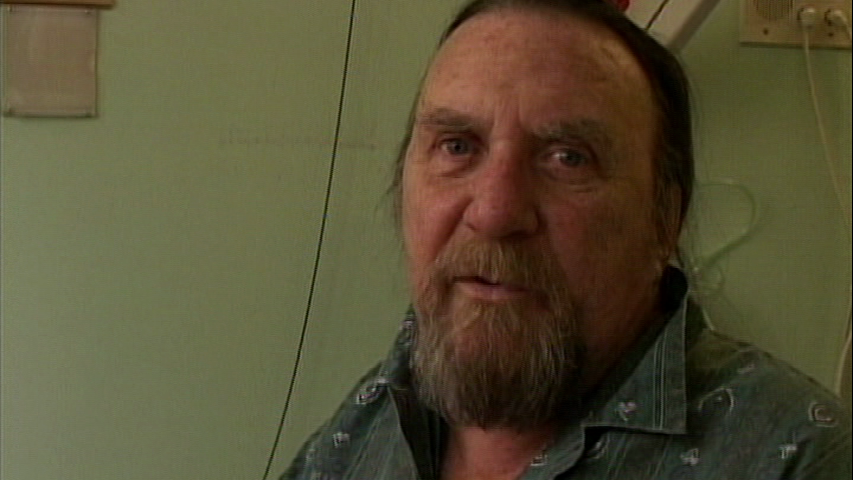
Richard Pollard was a biker, a drug addict and from the general vibe he gives off a thorough-going hellraiser for most of his time on earth. He arrives at Grace Hospital with a bad case of lung cancer but a lot of interesting life experiences to relate. Some might consider his illness a fair recompense for all the abuse he inflicted on his body, others will consider him the most charming and likable of the group we meet in this film. He probably wouldn’t have much argument with either party. A roguish mix of devil-may-care self-deprecation and childlike narcissism comes through much of the time that Richard is on the screen, as he discloses that he’d rather go down in a gun battle than whither away like he does in a sanitized pastel-colored hospital room.

Lloyd Greenway, like Carmela, is one of those Dying at Grace that we learn more about from his family than from the man himself. Lloyd suffers from a brain tumor that limits his ability to talk and has already ruined his mobility. The ordeal that his condition creates for his partner Norm and for Lloyd’s parents reminds us that death is much more than just the mere cessation of life for a single individual, but is indeed a transformative experience that impacts and changes the reality of everyone touched by the removal of that person from their world. A flood of emotions, memories, regrets and past celebrations comes to the surface, expressed through tears and gestures of consolation, even as the messy business of tending for a fragile broken body must be attended to.

As difficult, even grueling as it may be to sit through Dying at Grace compared to whatever notion of “the average movie” you may have in mind, I have no hesitation about recommending it. If for no other reason, a close, thoughtful viewing can hardly help but have the effect of making one appreciate the opportunity that every day of life offers each of us to simply enjoy and even marvel at the gift of continued existence. Get it while you can.

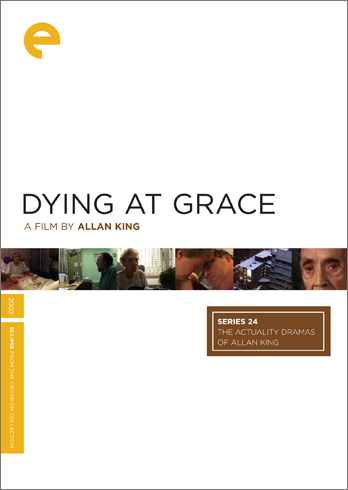



![Bergman Island (The Criterion Collection) [Blu-ray]](https://criterioncast.com/wp-content/uploads/2022/11/bergman-island-the-criterion-collection-blu-ray-400x496.jpg)
![This Is Not a Burial, It’s a Resurrection (The Criterion Collection) [Blu-ray]](https://criterioncast.com/wp-content/uploads/2022/11/this-is-not-a-burial-its-a-resurrection-the-criterion-collection-blu-ray-400x496.jpg)
![Lars von Trier's Europe Trilogy (The Criterion Collection) [The Element of Crime/Epidemic/Europa] [Blu-ray]](https://criterioncast.com/wp-content/uploads/2022/11/lars-von-triers-europe-trilogy-the-criterion-collection-the-element-of-400x496.jpg)
![Imitation of Life (The Criterion Collection) [Blu-ray]](https://criterioncast.com/wp-content/uploads/2022/11/imitation-of-life-the-criterion-collection-blu-ray-400x496.jpg)
![The Adventures of Baron Munchausen (The Criterion Collection) [4K UHD]](https://criterioncast.com/wp-content/uploads/2022/11/the-adventures-of-baron-munchausen-the-criterion-collection-4k-uhd-400x496.jpg)
![Cooley High [Criterion Collection] [Blu-ray] [1975]](https://criterioncast.com/wp-content/uploads/2022/11/cooley-high-criterion-collection-blu-ray-1975-400x496.jpg)